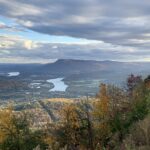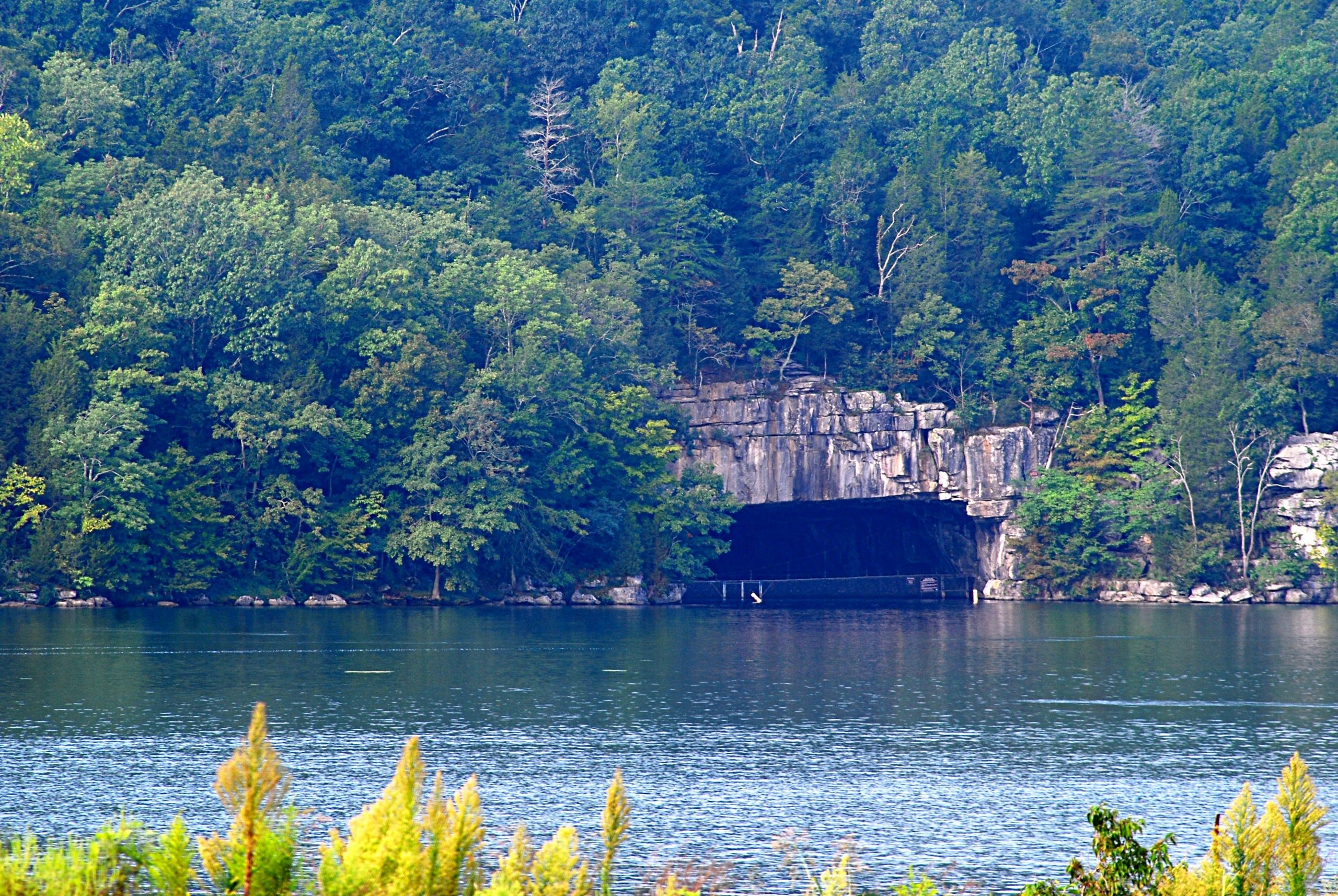
Five Southeast Tennessee Wildlife Viewing Hotspots

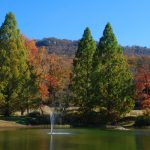
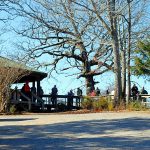
Five Southeast Tennessee Wildlife Viewing Hotspots
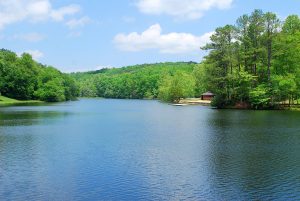
Southeast Tennessee is blessed with an abundance of wildlife, as well as great places for wildlife viewing. While it would be challenging to determine exactly which of the many sites are at the top of the list, here are five Southeast Tennessee wildlife viewing hotspots that are worth a visit
Hiwassee Refuge
The Hiwassee Refuge, at the confluence of the Hiwassee and Tennessee rivers and near the site of the historic Blythe Ferry, features the largest winter flock of sandhill cranes in the Southeast (outside of Florida). An observation platform provides a sweeping view of the surrounding fields and the shoreline of a bay, along with flocks of feeding cranes and other birds. Besides a variety of waterfowl species, whooping cranes and golden eagles have been spotted here, and it’s considered one of the top five locations in the state for bald eagles.
Though present from November through February, sandhill crane numbers tend to peak in January. The refuge is closed between November 15 and the end of February, except for the observation platform, which remains open year-round.
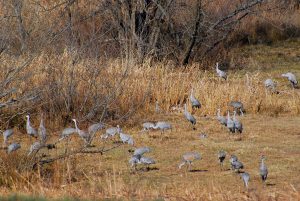
The Tennessee Sandhill Crane Festival, held each January at the nearby Birchwood Community Center, includes live raptor shows and free shuttle bus rides to the refuge overlook.
A blufftop observation deck at the nearby Cherokee Removal Memorial Park offers views of cranes and other birds gathered on the shorelines of Hiwassee Island and the far riverbank.
Tennessee Riverpark
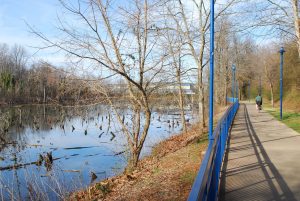
The Tennessee Riverpark, a paved, multi-use greenway trail following alongside the river for 13 miles from Chickamauga Dam through downtown Chattanooga to St. Elmo, has become a popular location for wildlife viewing in addition to many other outdoor activities.
While there is good potential for wildlife viewing throughout the Riverpark, the Chickamauga Dam area, Amnicola Marsh, and the Curtain Pole Road Swamp are some of the best sites.
While beavers have changed Amnicola marsh into more of a lake, decreasing the diversity of bird life, it still provides some good opportunities for wildlife viewing. Canada geese, great blue herons, wood ducks, and great egrets are some species to look for. There are two areas along the Riverwalk designed for viewing the marsh.
A little south of Amnicola Marsh, the Curtain Pole Road Swamp, reached by following the Riverwalk to the right of the parking area, is an extensive wetland with a number of dead tree trunks and stumps sticking out of the water. Inhabited by beavers and numerous turtles, the swamp’s bird life includes green herons, usually abundant in summer, and tree swallows, as well as various ducks.
More information (Click on “Tennessee Riverpark”)
Reflection Riding Arboretum & Nature Center
Reflection Riding occupies 317 acres of forest, meadows, ponds and creek bank at the base of Lookout Mountain. Approximately 14 miles of trails include about 3 miles of gravel driving loop and provide great opportunities for wildlife viewing. The trails connect to the 30-mile network of National Park Service trails on Lookout Mountain.
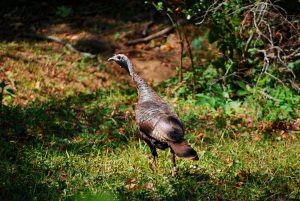
Besides an abundance of plant species, a large variety of wildlife can be observed here, including white-tailed deer, wild turkey, great blue herons, green herons, turtles, and much more. A field study of Reflection Riding’s five distinct ecosystems tallied 107 bird species, 20 mammals, and 28 reptiles and amphibians.
A wildlife exhibit features nearly 40 animals native to the region, who for various reasons are unable to survive in the wild, and includes several endangered red wolves.
An elevated boardwalk accesses a wetland forest and the Discovery Treehouse and Paddlers’ Perch. Canoes can be rented for paddles on Lookout Creek, which is another great way to see wildlife, or you can bring your own.
A variety of programs and events are scheduled year round at Reflection Riding to help people of all ages to connect with nature.
Admission is officially free, but guests are requested to donate $10 per adult and $7 per child.
Nickajack Lake
While Nickajack Reservoir technically extends through Chattanooga, here Nickajack Lake refers to the section between Nickajack Dam and the site of the old Hales Bar Dam. There are several good wildlife viewing locations around the lake. Click on each link for directions and more information.
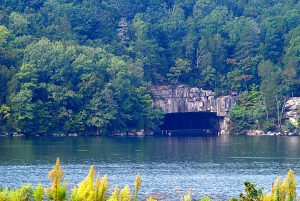
Partially flooded by the lake, Nickajack Cave is known for the thousands of gray bats that inhabit it from late April through early October. During this period, which is also when they give birth to their young, they emerge each evening around sundown from the mouth of the cave to search for food in a continuous stream estimated to contain over 100,000 bats and lasting about 45 minutes.
Cliff swallows also inhabit the cave, co-existing with the bats and building mud nests on the ceiling.
A 1,000-foot boardwalk leads from the Maple View Day Use Area through the woods along the shoreline to an observation platform overlooking the cave entrance. Or you can launch a canoe or kayak from the Maple View boat ramp. The Maple View site is open 6 a.m. to 9 p.m. Central time from April through October and is minimally maintained.
Located on a peninsula in the lake, Marion County Park is a great place for birding, with opportunities to view both songbirds and waterfowl, as well as ospreys and bald eagles.
TVA’s Little Cedar Mountain, adjacent to I-24, rises to an elevation of 260 feet above the lake. The unique limestone geology of the 320 acre mountain supports a wide array of wildflowers and other plant life, as well as abundant wildlife, including deer, turkeys, coyotes, armadillos and more. Two overlooks give scenic views of Nickajack Lake and the surrounding plateaus, along with an opportunity to spot bald eagles, ospreys and other water birds.
There are approximately 4 miles of hiking trails on the mountain, with several hike options. A trail on top that connects both sides of the main loop passes a small pond which is the primary water source for wildlife on top of the mountain.
While both ends of Nickajack Dam are good birding spots, with over 180 species having been identified, the north end is easier to access and has unofficial trails which run alongside the river, through an abandoned campground and under the power lines below the dam. There is potential for viewing a variety of waterfowl, as well as songbirds. It’s a great place to spot bald eagles in winter and ospreys in summer. While exploring the wooded area below the dam, you may also run across the handiwork of beavers or see white-tailed deer.
Grundy Lakes
One of the lesser-known units of South Cumberland State Park, Grundy Lakes has significant wildlife viewing potential. In addition to historic coke oven ruins, there are four man-made lakes ranging in size from 1 to 16 acres. A one-way paved road with a walking lane circles the two largest lakes, creating an easy 1.7-mile walk on pavement. Following the road along the shore of the upper lake provides good chances to see wildlife such as wood ducks, turtles, frogs and fish, as well as the work of beavers. A prominent beaver lodge can be seen on the right-hand shore. The shallow upper end of the lake is popular with dragonflies and damselflies. Wood ducks, often with young ducklings in spring, tend to be less elusive than usual here.
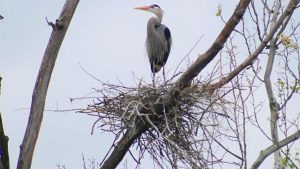
Another option is the 1.3-mile Lone Rock Trail, which circles the lower lake, where you’ll likely see Canada geese or great blue herons. Kingfishers, red-headed woodpeckers, green herons, and mallards among the more than 80 species that can be spotted. White-tailed deer are commonly seen on the wooded hillsides.
Fiery Gizzard trail map (includes Grundy Lakes)
South Cumberland State Park website
These locations are just a sample of the wildlife viewing opportunities to be found in Southeast Tennessee, but they should be enough to whet your appetite for further exploration. Find lists of bird species identified at each of the sites, as well as other potential viewing locations in the region, at eBird.org.

Bob Butters





